Shelpek: Basic Information
Pronunciation
Alternative Name(s)
Dish Type
Course
Mealtime
Popular Variations
Shelpek: Ingredients and Preparation
Main Ingredients
Main Cooking Method
Preparation Process
Shelpek: A Deep Dive
Cultural Significance
Taste
Texture
Aroma
Color
Serving Style
Serving Temperature
Accompaniment
Occasions
Seasons
Special Diets
Calories
Popularity
Popular Similar Dishes
- Chebureki
- Qistibi
- Puri
- Khuushuur
- Haliva
- Börek
- Samosa
- Lörtsy
- Qutab
Popular Dining Area
Shelpek is a flatbread variety in Central Asia created by the Oghuz Turk people. This flatbread version requires a batter of flour, milk, sugar, baking soda, salt, vegetable oil, and kaymak (a type of sour cream), usually shaped into a ball before rolling for frying.
When added with yeast, shelpek’s dough gets a softer profile. Commonly, the Central Asian flatbread is an essential part of the Muslim population, especially on Fridays, a holy day in this religion.
For serving, locals opt for a wide range of options like jam, sour cream, cheese, or jam to enhance the flavor of shelpek. Also, tea is a favorite pairing with shelpek to enjoy in the afternoon. Alternatively, curries and stews are great to have with the flatbread.
These features of shelpek are intriguing to look at, but there is more to it in terms of benefits and drawbacks when consuming. Furthermore, I’ll also gladly provide you with answers to some frequent inquiries.
Key Points
Shelpek Images
Pros and Cons of Eating Shelpek
Like any food, shelpek comes with a few features in terms of the advantages and disadvantages that anyone needs to know:
Pros
Cons
Having explored the various pros and cons of shelpek, there are still more nuances to explore about this flatbread of Central Asia. For that, let me share with you some common queries.


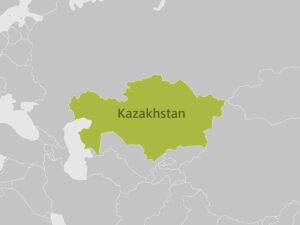
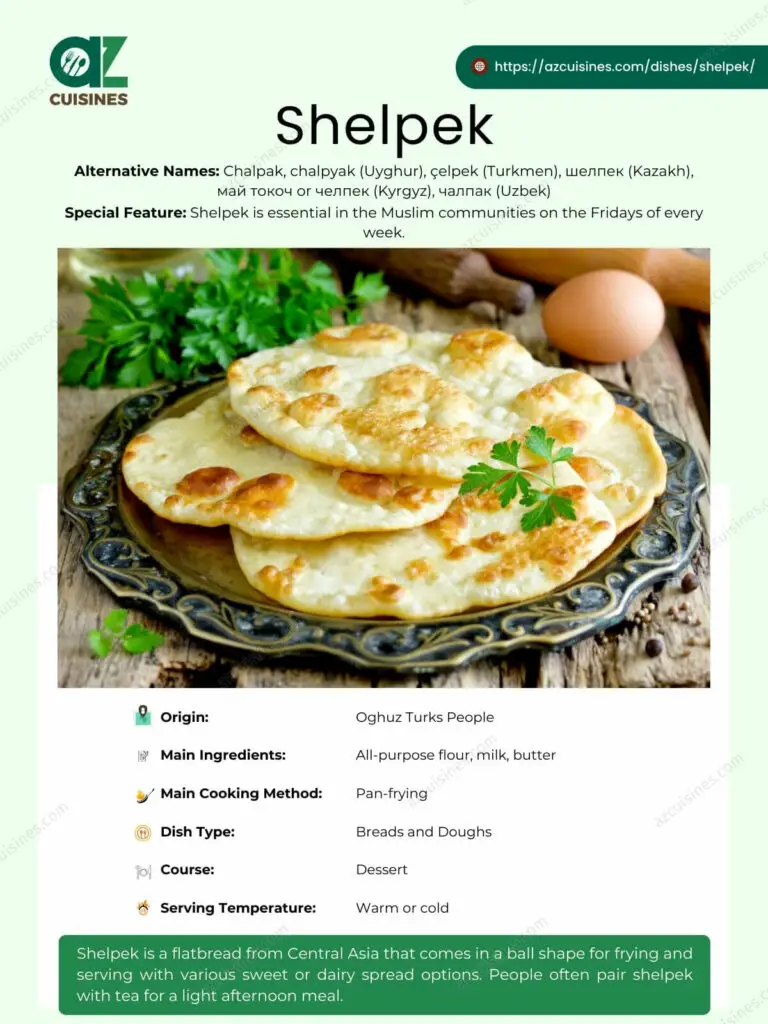
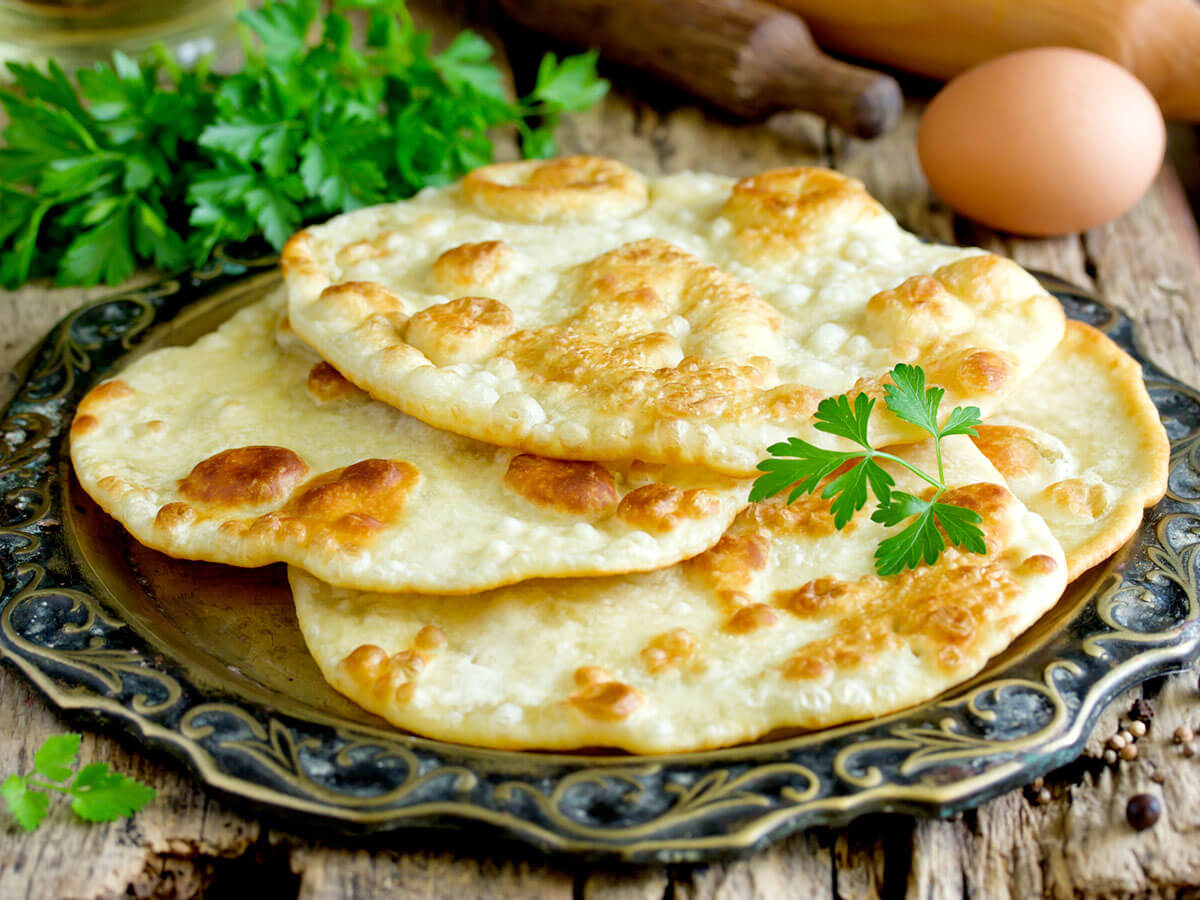
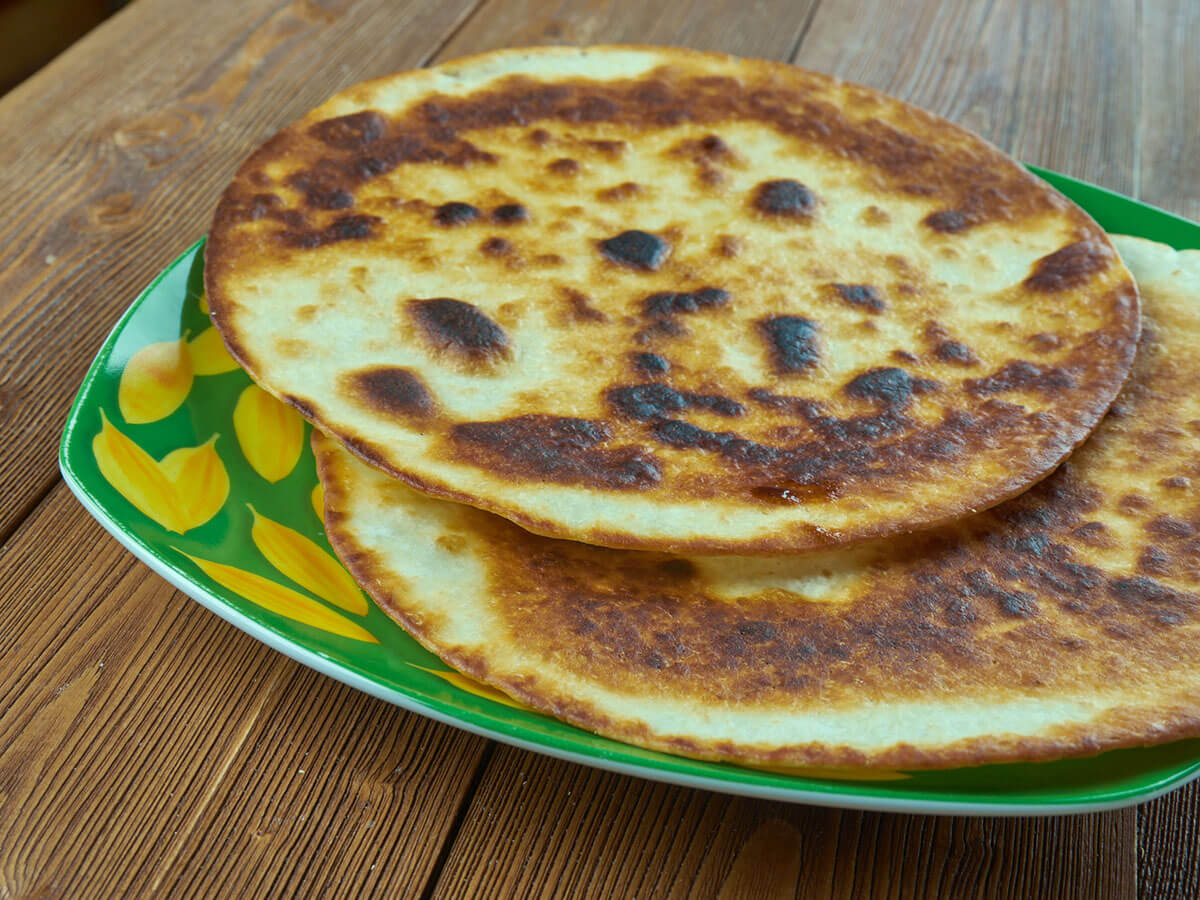
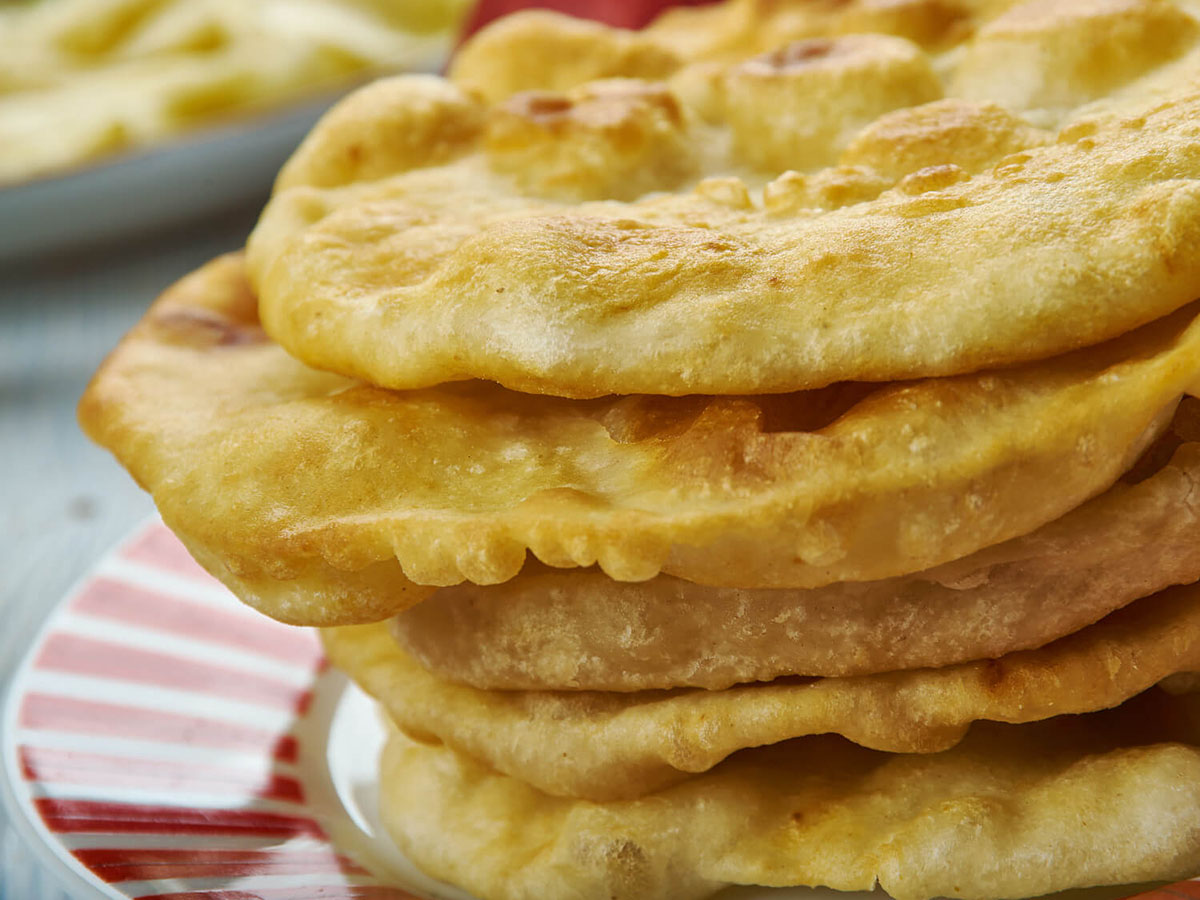
Adam Sam
Senior Food and Drink Editor
Expertise
Food Writer & Recipe Developer, Recipe Tester, Bartender, Cooking-video Maker, Editor In Chief
Education
Adam Sam, an experienced food writer and recipe developer, is passionate about blending diverse culinary traditions, national dishes, and innovative beverages, showcasing his proficiency in both traditional and modern recipe testing.
As the Editor-in-Chief, he elevates culinary content from street food to fine dining, focusing on Western cuisine and types of drinks at azcuisines.com, and is professional in creating engaging cooking videos that simplify complex dishes and ingredients.
His passion for food is evident in his writing, where he uniquely merges various cultures, traditions, and contemporary trends, skillfully combining classic recipes with modern cooking methods.